Calf Sharing | How to Add Flexibility to Your Homestead
Getting a family milk cow or milking animal sounds dreamy on your homestead, but is it really practical this day in age? Don’t you need to milk twice a day? And what about traveling? Will I ever be able to leave? The answer – calf sharing! We’ll break down the in’s and out’s of calf sharing and why it makes so much sense on the modern homestead!
Meet Thimble and June!
Thimble is our Jersey milk cow we’ve had since 2019.
June is her most recent calf, also a pure Jersey, that we’ve had since, well… June of 2022.
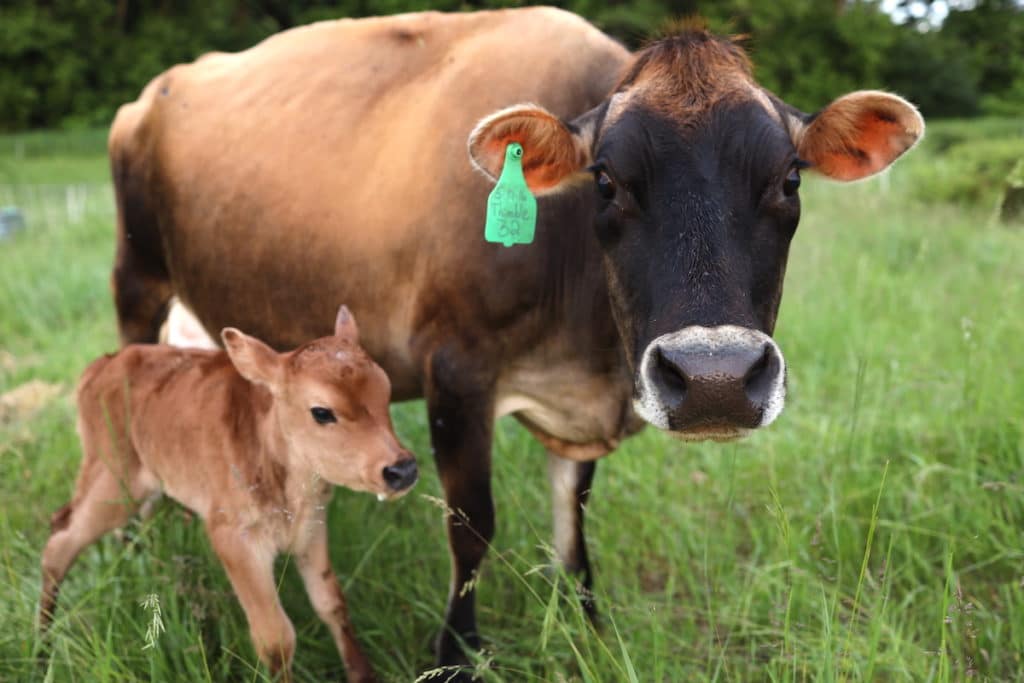
Before getting Thimble, we knew basically zilch about milk cows or any milking animals for that matter. When the opportunity came up to purchase Thimble from some friends of ours, we knew just enough to ask some of the red flag questions in our minds.
“Don’t milk cows tie you down, like, forever?”
“How can we possibly find time to milk twice a day?”
“We’d be like those old dairy farmers who never traveled outside their home county their entire lives?!”
But as the family explained what they do, it didn’t sound anything like that.
“Oh, you only milk once a day… hmm.”
“Wait, you can leave your farm for a few days and her utter doesn’t explode?”
“And what’s this you say about an irregular milking schedule and only milking when needed?”
This was beginning to sound more doable. With a young family and full lives, maybe we could make this fit!
Yes, we ended up purchasing Thimble and us recently converted former suburbanites became the proud owner of an 800 lb. lactating bovine.
Calf sharing – what the family we purchased her from was practicing and what we now also practice – has made the transition to owning a family milk cow so much more enjoyable, flexible, and doable for our family.
What is Calf Sharing?
Implementing calf sharing adds a few extra logistics, which we’ll get to, but the concept is as basic as it gets.
Calf sharing means that you (the milker) and the calf are sharing milk off of mama.
This is a coordinated effort of separating the calf for a period before you plan to milk allowing mama’s milk supply to build up prior to milking. Then, after milking the calf is reunited with mama until this process repeats itself and they are once again separated.

What this looks like on our farmstead is separating Thimble and June the night before during evening chores. We always have an adjacent paddock available for our nightly move. We get up early and milk and then June is reunited with Thimble for the rest of the day.
For us, it goes off like clockwork. But it doesn’t have to either! Calf sharing can add a lot of flexibility to your world along with so many other benefits. Let’s get into them!
Benefits of Calf Sharing
Once a day milking
Calf sharing pairs best with only milking once a day. The typical rhythm is separating the calf for 12 hours, milking, and then reuniting them with mama for 12 hours. This really only leaves room for milking once a day. For us this is a major plus! We probably would not have gotten Thimble in the first place if milking needed to happen twice a day. Once a day milking, with calf sharing, supplies plenty of milk for our family’s needs without too much of a time commitment.
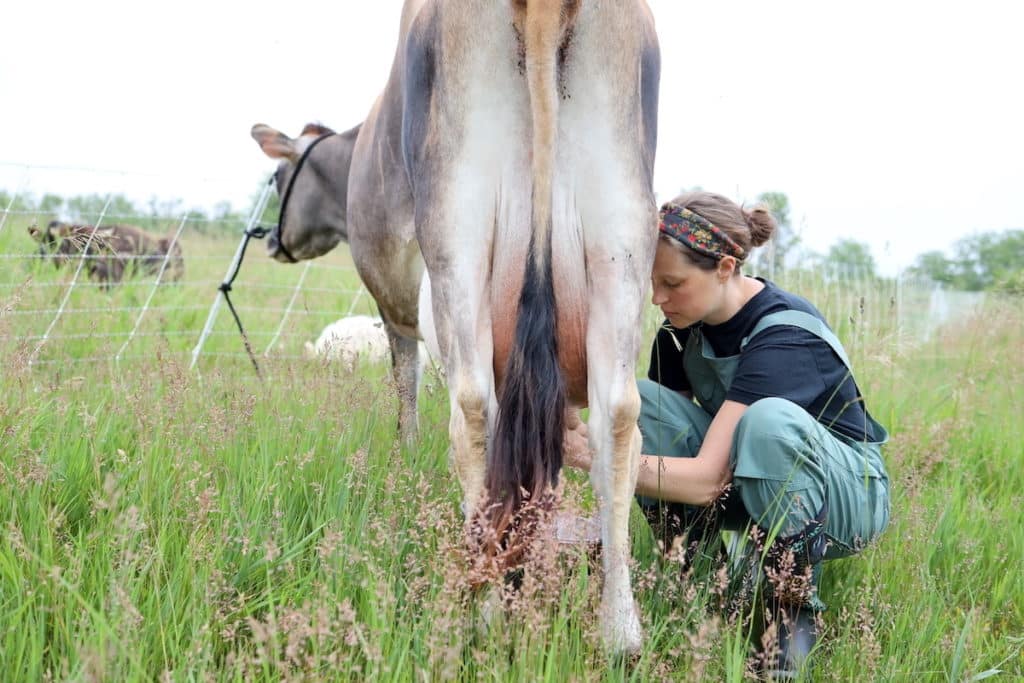
Not milking her out fully is OK
Knowing that your milk cow will be reunited with your calf after milking is such a relief! Normally you would want to make sure you have stripped her out completely after each milking to reduce risk of mastitis. But as good and thorough a milker as you may be, the calf will always be better, and in that you can rest easy. You can certainly feel the freedom to milk her out completely. But if you don’t, the calf will do a bang-up job drinking every last drop mama has to offer.
Raising robust calves
Let’s face it, there’s no replacement for mom’s milk. Calves from dairy cows are often fully separated from mama early on leaving them disadvantaged from a health and nutrition standpoint. Just like with humans, calves will get the most complete and individualized nutrition they need from their mama’s milk supply. Allowing the calf to drink off your milk cow as long as they’d like will help them develop into a robust and healthy cow.
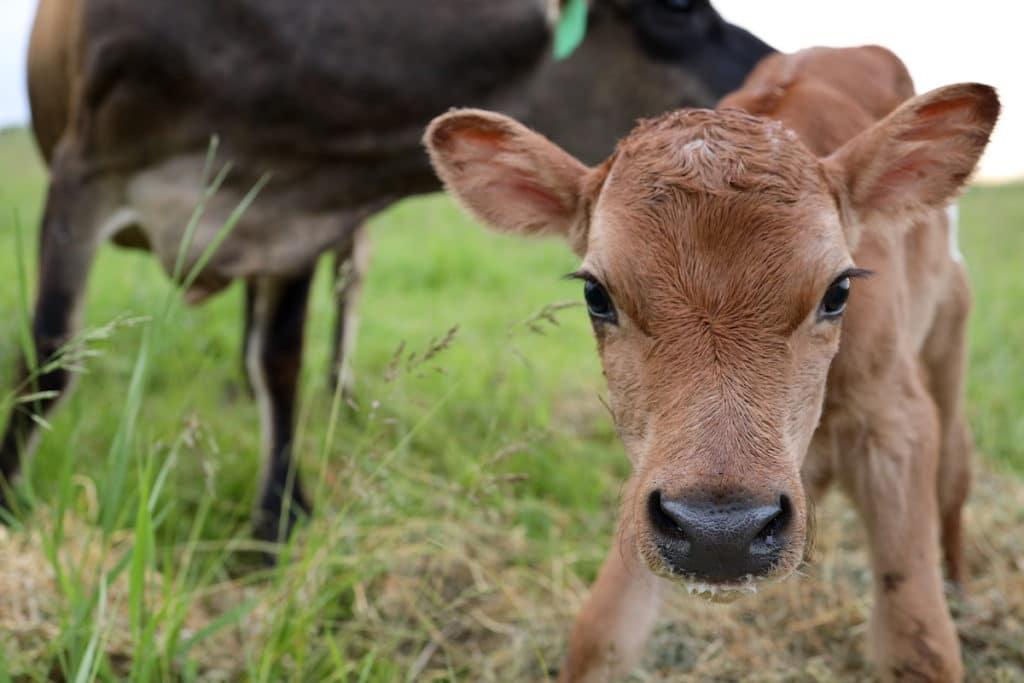
Ability to travel
Calf sharing opens up the possibility of getting away from the farm for homesteaders. When the calf is drinking off mama, that means you can leave them together for a period of time. The calf will be full and happy and mama will be just fine. Now, you may not want to be away too long at the risk of her supply dropping. But shorter-term travel like an overnight or weekend trip are very doable.
Longer term travel might also be easier to coordinate since whoever milks in your absence doesn’t need to do everything perfectly knowing the calf will happily clean up what they left behind. This can help put you and whoever is milking for you at ease while traveling. We recently took a week-long vacation while calf sharing and talk through some of the tips and considerations we found helpful when planning to leave the homestead in this video.
Milk as needed
Both with quantity and consistency, milk sharing can give you lots of flexibility with your milk cow. First with quantity – if you only need a gallon that day, you can totally just milk a gallon and then stop. It may not be best practice to do that every day as your milk cow will likely drop her supply accordingly over time. But it’s completely possible to just milk what you need on occasion.
In terms of consistency, you also have the option to not necessarily milk daily, or even at the same time each day. When you need milk, you can simply separate mama and calf and plan to milk 12 hours later. This is basically how the family we bought Thimble from operated and they were able to share milk with a couple other families as needed.
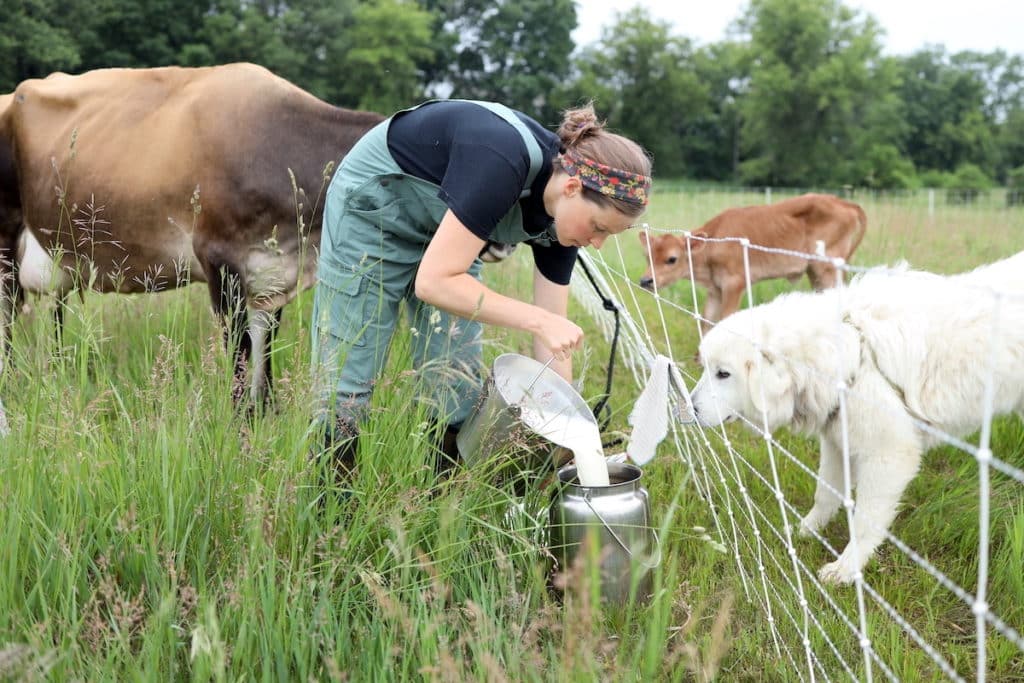
While that flexibility is great, it is worth noting that cows are creatures of habit. Plus, they do tend to adjust their supply over time to meet current needs, but don’t necessarily regain supply if that need increases. For that reason, we stay on a very consistent schedule with separating our Thimble and June every night and milking every morning. This keeps her supply very predictable which fits well into our world. But if your world is less predictable, you can still milk as needed or as able and get a good supply of milk with calf sharing.
Downsides of Calf Sharing
Extra moving
That extra daily step of separating your cows adds up! Moving your cow to a separate paddock is certainly easier than needing to milk a second time each day, but it’s also not something you should overlook. Creating a space for mama to move into each night, complete with a water supply and access to pasture or feed, may not be a simple task.
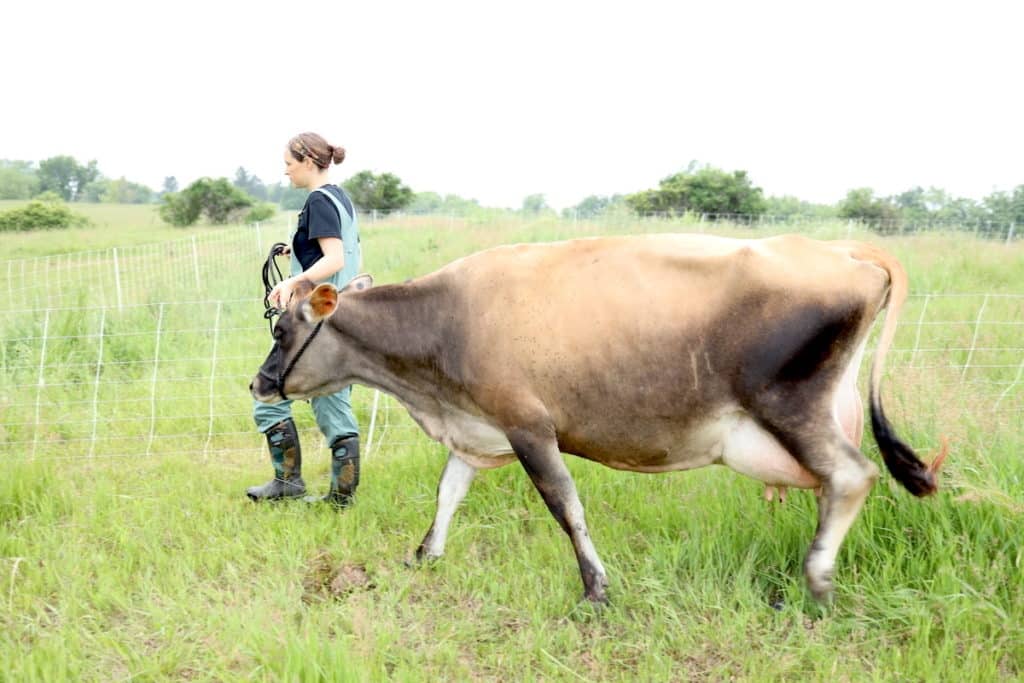
We have found that because cows are such routine animals, this moving becomes a breeze once everyone is used to it. Most nights once Thimble sees me walking toward their paddocks, she stands up, walks toward the fence gate, I open the gate, and she walks right through. Every cow and setup might not be that simple. But separating our cows each evening has become a very minor step and time commitment in the grand scheme of things.
Extra fencing
Yes, separating your cows for calf sharing means you will need two fully secured fenced sections – one for mama and one for calf. And preferably these paddocks would be adjacent or in close proximity. It’s not overly complicated to make a second paddock or split off one paddock into two, but you’ll want to always have a plan for how that is going to work out.
Our post – What to Know About Rotational Grazing on a Small Scale – shares how we create separate paddocks with moveable electric netting that both allows our cows to graze in a regenerative system and creates multiple paddocks that work perfectly for calf sharing.
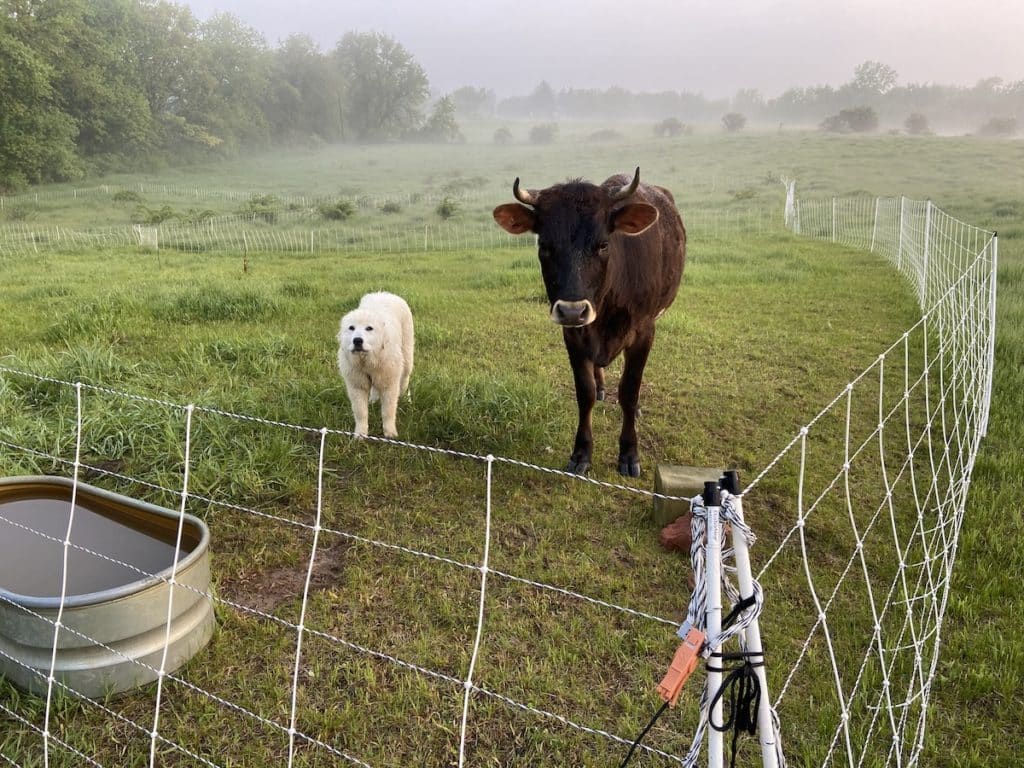
Giving up the gold
Cream that is! Cows have the amazing biological ability to withhold cream as they desire, and then let it down as they desire. And unless you and your milk cow have done some serious bonding, she’ll typically always favor her calf and reserve a good portion of cream for her. That doesn’t mean she’ll leave you creamless. But the cream line on your milk will ebb and flow based on her desire to withhold cream for her beloved calf.
We’ve found this to be most true in the month or two after calving where mama will give you significantly less cream to make sure her infant calf is getting everything they need. After that, she seems to be less concerned about withholding all the cream for her calf and gives us a nice and consistent cream line when milking while calf sharing.
How To Calf Share
1. Move your milk cow and her calf to separate paddocks so they are separated for 12 hours.
2. Milk your cow.
3. Reunite mama and her calf for 12 hours so the calf is free to drink.
4. Repeat as desired for milking.

Like most things, the steps to calf sharing are as simple as it gets on paper, but there are always logistics to figure out in the real world for your unique situation.
But it also doesn’t need to be complex. We’ve found that with a fencing option that’s easy to move and setup and an extra water trough, you can easily come up with a system that works for you, your cows, and your property.
When do you start calf sharing?
Calf sharing should begin at least one full week after your milk cow calves. Why? Colostrum! This is the supercharged, nutrient rich substance cows produce for their calves in the days following calving. It’s important for your calf to get as much of the thick colostrum as they can. Plus, mama and baby have a lot to figure out those first few days in terms of their own rhythms and routines for nursing, so it’s best to leave them be and let them bond!
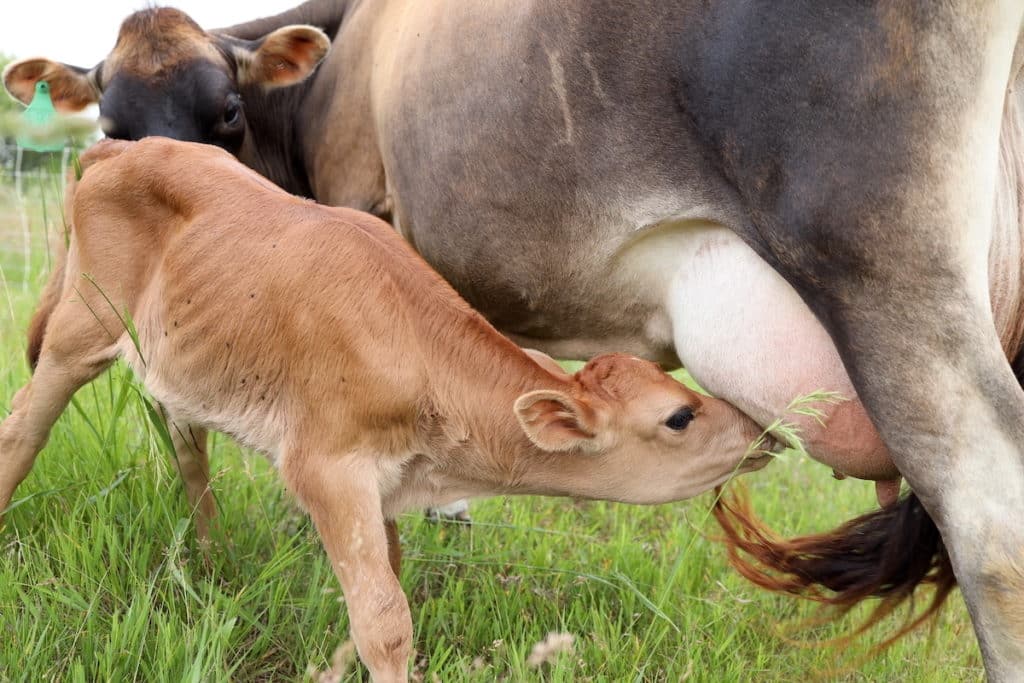
After a week, your milk cow should be mostly transitioned from colostrum to milk. We’ve typically started separating mama and calf for calf sharing some time during that second week after calving. The calf might put up a fuss for a couple days. But establishing the routine early helps normalize it for everyone and they all quickly learn to appreciate the routine of it.
What happens when the calf weans?
Sadly, as you might have guessed, calf sharing does not last forever. Calves gradually transition to solid foods as they grow and eventually wean themselves entirely off of milk. We’ve typically found this to be around 10 months post calving, give or take.
Once the calf is weaned fully, this means that in order to keep your milk cows supply up you will need to milk her daily. But, as we’ve found, that doesn’t necessarily mean you’ll need to start milking twice a day. We’ve always kept up the once a day milking after the calf weans, which has worked just fine.
There seems to be a natural curve to a milk cows supply. As the calf gradually transitions off of milk, the mama will adjust her supply accordingly. By the time the calf fully weans, she might be a bit more full than normal come milking time. But we’ve always found that as we keep milking only once a day, her supply levels out and we get about the same quantity of milk as we did during calf sharing.
Wanting more resources on keeping a family milk cow? Check out these posts:
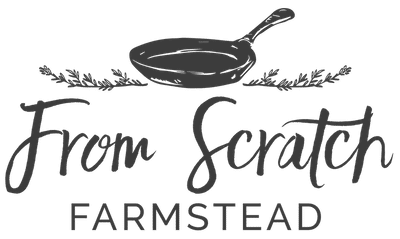

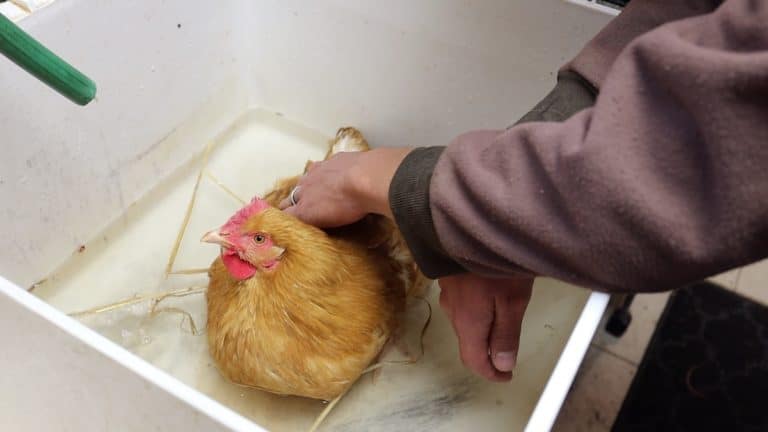

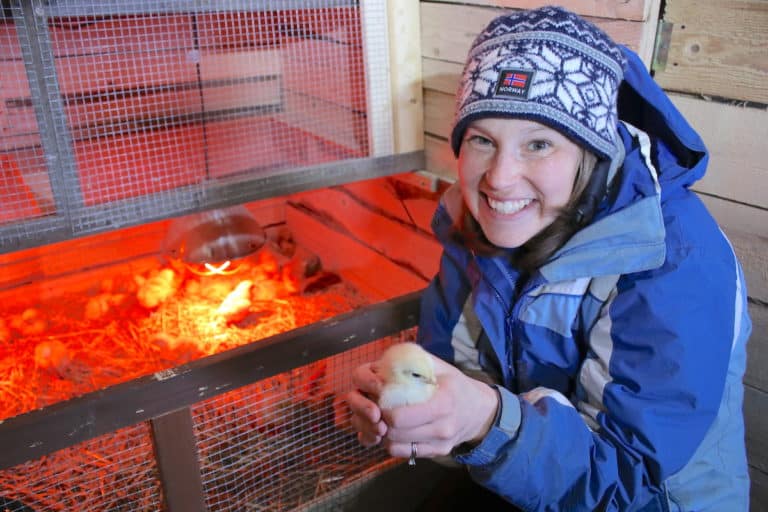
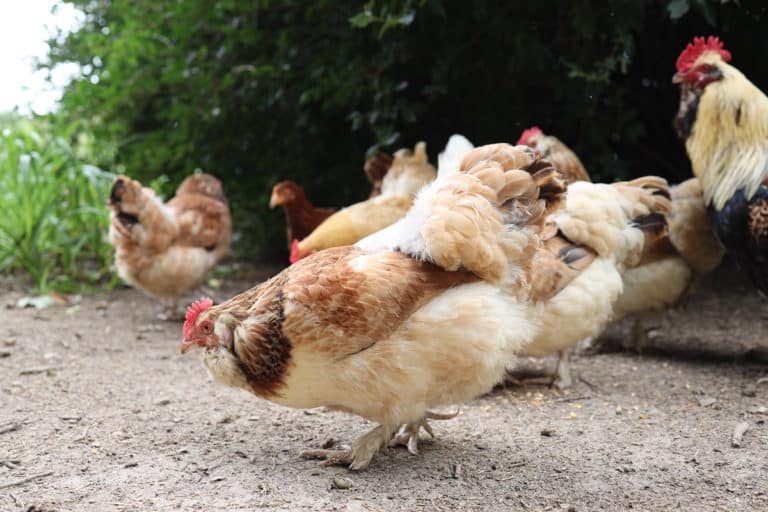
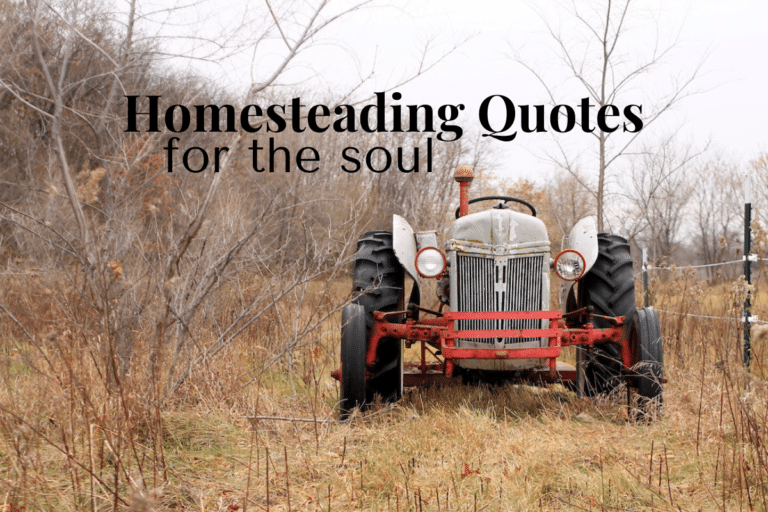
Hey Joelle,
Could you please tell me how long can you milk your cow without her having to get pregnant again?
Hi! We’ve always waited until our calf self weaned (usually around 10 months) and then got her bred shorty after. So, instead of her calving every year, she calves more like every 20-22 months. We would dry up her supply around 60 days before calving so we would have been milking her for roughly 20 months between calves. That being said, I don’t think there’s a magical time amount that you can keep milking for without having her get pregnant again. Like a woman, if you keep removing milk, she should continue to make it but at some point I would think that amount would drop off. We’ve really liked the rhythm of her calving roughly every other year and that has been totally fine for her and having a healthy milk supply! I hope this helps answer your question, let me know if I need to clarify anything.
Hello,
I’m loving your blog! I’m interested in a dairy cow now. Have you found that your dairy cow produces for 5 years? That’s what I’ve read, & then is it slaughter time? Also I read you let calf sharing happen for 10 months, then milk solely for 10months, before breeding again right? I’m wondering how many cycles I could get out of a dairy cow before slaughter time, which I dread thinking about. I’m sure I’ll get quite attached! Thank you! 🙂
Hi! Good questions. I don’t think it needs to be super black and white. From what we’ve read, a dairy cow in a homestead setting can continue to breed/milk until she’s around 10-12 years of age. Our girl is 7 and we just got her bred, which will be her 4th calf. Most dairies get their mama’s bred every year, just a few months after calving. We do more similar to what you described and let the calf nurse/calf share until it naturally weans and got her bred roughly 10 months – one year after calving the previous year. We will continue to milk until 60 days before her calving date. Our hope is to still get our dairy cow bred at least one or 2 more times after this time as long as she births easily and seems in good health. Hope this helps!